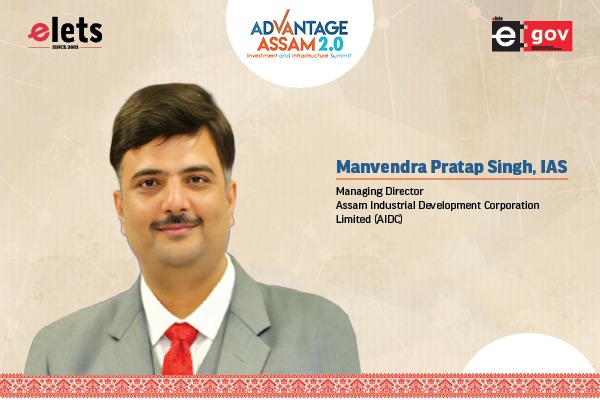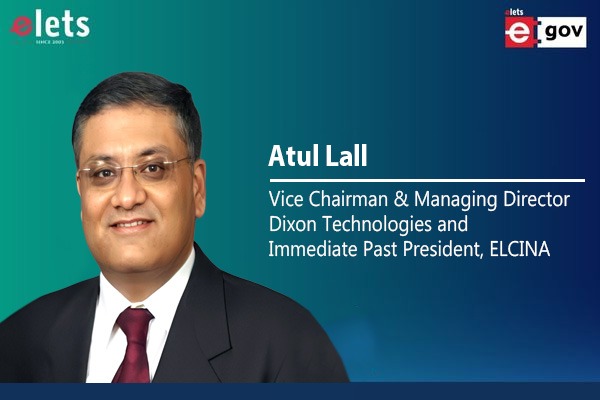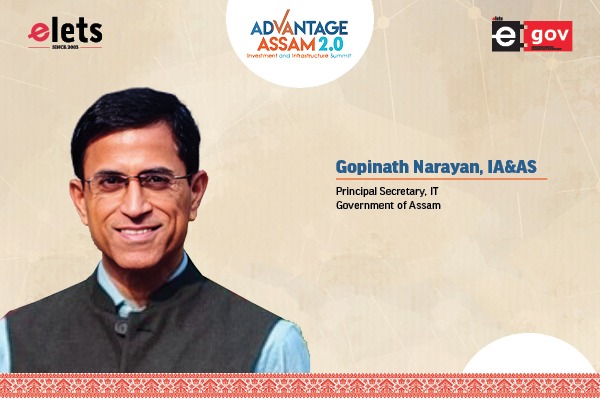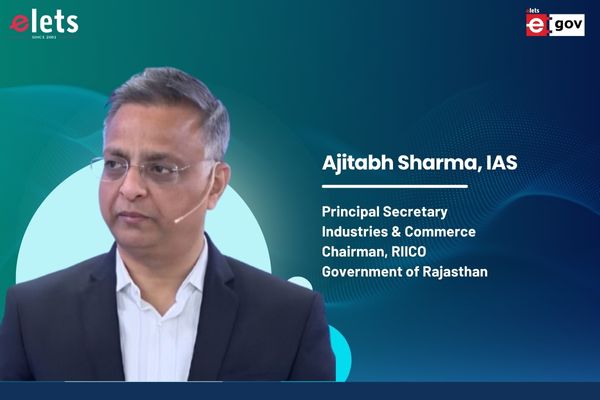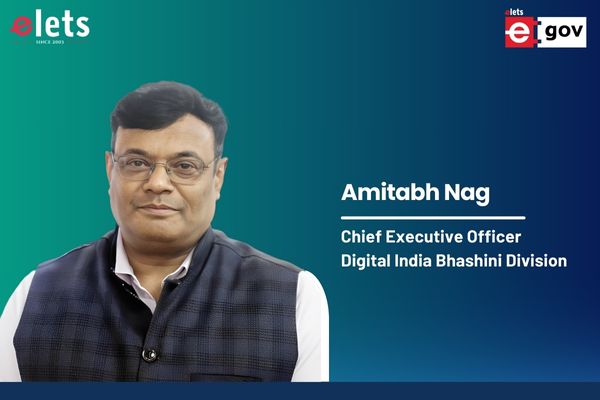
Andhra Pradesh has been ahead of other states when it comes to IT technology. The PDS system in the state has become accessible to most of the people because of the technology reaching to one and all, says Peeyush Kumar, Secretary, Finance, Government of Andhra Pradesh, in an Interview with Arpit Gupta of Elets News Network (ENN).

Peeyush Kumar, Secretary, Finance, Government of Andhra Pradesh
What is the Comprehensive Financial Management System (CFMS) and how is it helping the Government of Andhra Pradesh in data visualisation?
The Comprehensive Finance Management System is an end-to-end IT solution for all finance approvals starting from the budget sanction to the budget release order to actual utilisation to the payment of bill system. Many states have their own integrated finance systems but those are not as comprehensive as CFMS. They are not end-to-end in the manner in which Andhra Pradesh has designed CFMS. Government of India also has the Public Finance Management System (PFMS) but that too falls short of what we can do in the CFMS. In CFMS, what we have done is that we have made all the departments as user groups, both for the budgeting exercise and for the payments, on a single platform. So, all the DDOs and the account officers are also on the main system. For Direct Benefit Transfer also it is integrated using the MPCI system, then linking with the PFMS and linking with E-kuber of the RBI. It is a comprehensive financial solution.

What efforts have been initiated to improve tax collection in the state?
A tax collection system usually depends on the drive and larger the tax base and compliance the better it is. With Government of India introducing GST, the entire effort has been to provide IT platform to various businesses to file their Returns. At each stage all the billing systems are getting automated. Andhra Pradesh has been ahead from other states since the initial stage itself. In the last 20 years, we have taken a lead in IT, so we were in better position to implement the Government of India’s initiatives in so far as GST is concerned. Besides that we have also integrated other things like Excise with the IT— thanks to the CFMS. So, now all tax collection is directly coming to the treasury due to this end-to-end solution.

Andhra Pradesh saved Rs 2,585 crores through Aadhaar seeding in PDS. How did you deploy the technology to prevent leakages?
Government of India started streamlining PDS on the IT system from 2015 onwards, but Andhra Pradesh achieved this much earlier. Somewhere around 2010, we had the first generation of IT system in the PDS and in the last five years we have improved it. In 2015, when Government of India introduced its PDS system, we were the first to adopt it. The solution is very comprehensive and well designed. What we did is that in the initial phase itself we created the SRDH database. At one point of time when our system was coming up there was a facility of State Resident Data Hub, and based on the SRDH database we could integrate all the ration cards with the Aadhaar number.
So, while many states were struggling to do that because of the problem of mismatch, in Andhra Pradesh because of the comprehensive survey we had done in the field in which we had captured almost 95 percent of the population covered under PDS, we could capture the databases and the number of units which are there. In fact, new cards are also being created through the online system where the application is submitted and verification is done.
Based on the verification report, new cards are generated on the system then the phone number of each card holder is integrated so that they can receive text messages when the ration is available at PDS shops.
Through the e-PoS devices we have achieved a high success rate as the quality of Internet connection and the equipment is very good. Where we face the biometric verification problem, we have introduced an alternate system. So, the entire release of the ration is done through the IT system.
In some exceptional cases where there is a single woman, destitute lady or an old woman who is not able to come to the PDS centre to collect ration we have deployed self-help groups to help them. Andhra Pradesh has a very strong network of women self-help groups who are very active in the field and we have trained them to use the technology.
Through the e-PoS devices, we are able to reach to the last mile. Our exception mechanism is also very strong that ensures that we reach out to the people. The success rate is over 99 percent with few exceptions. We don’t have any place in the state where the manual PDS system has been resorted. The integration of the system with biometrics ensures that the ration reaches to the right person in a timely manner.
Earlier when the manual system was in place, if somebody would not collect the ration it would normally be reported as collected. The new system ensured savings that we could upload into the system and that’s how we were able to save Rs. 2,400 crores.
The State has utilised 72.4 percent of total budget on developmental programmes. What are the major areas of investments?
After bifurcation of Andhra Pradesh, despite all the progress we have made there is a lot of scope for work on parameters like education, infant mortality rate, and health. Of course, relatively the per capita spending or social parameters in North India might be good but within the South Indian states Andhra Pradesh has a lot to achieve. Therefore, we have been focusing on developmental work especially in the health and education sector where we have been using IT.
We provide comprehensive help to the deserving people under concepts like cradle-to-grave, which covers people from early childhood to education to health and jobs through IT interventions. That’s why our expenditure on developmental programmes is on the higher side.
What measures have you taken to improve debt management in the state?
After bifurcation of Andhra Pradesh, we have been running revenue deficit budget for the last three to four years because of the liabilities we have taken from the erstwhile combined Andhra Pradesh. This is an area of concern and we have been focusing on it. One of the major decisions has been the shift towards the open market borrowings. So, we have reduced the small savings or the high cost debt and we have been trying to replace it with the lower cost debt. Our proportion of the market borrowing or open market borrowing has been increasing and also from the stock of debt we have been replacing some of the expensive debts and replacing them with lower cost debts. We are making a deliberate attempt to move towards (i) open market borrowing and (ii) to replace the high cost debt with the low cost debts. Active swapping and repaying the debts are the instruments we are using.
Also Read: The Rising IT Hub
Tell us about the future plans of the state?
Andhra Pradesh being a new state, we have lost Hyderabad which was earlier a major attraction for service sector. On agricultural front we are doing well with focus on irrigation. We have been able to achieve a double digit growth— thanks to the agri-sector. But a lot of effort has to be made in the industrial sector and service sector as well. We are developing the Amravati town, not only as a capital city but also as a major IT hub to attract investments and people in the service sector. Apart from that, Vizag can be an industrial corridor because we have a long coastline. We are trying to develop different coastlines so that industrial hubs can connect the northern part of the coastal Andhra to the southern part. We are also working on developing some industrial pockets like in Vizag area where we are looking to develop pharmaceutical sector and med-tech zones.
Be a part of Elets Collaborative Initiatives. Join Us for Upcoming Events and explore business opportunities. Like us on Facebook , connect with us on LinkedIn and follow us on Twitter, Instagram.
"Exciting news! Elets technomedia is now on WhatsApp Channels Subscribe today by clicking the link and stay updated with the latest insights!" Click here!




